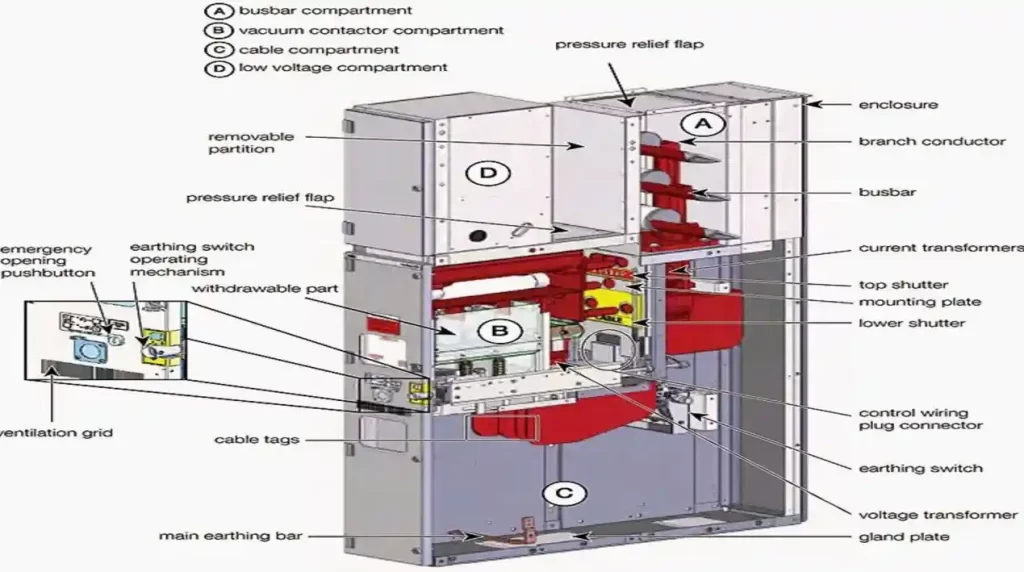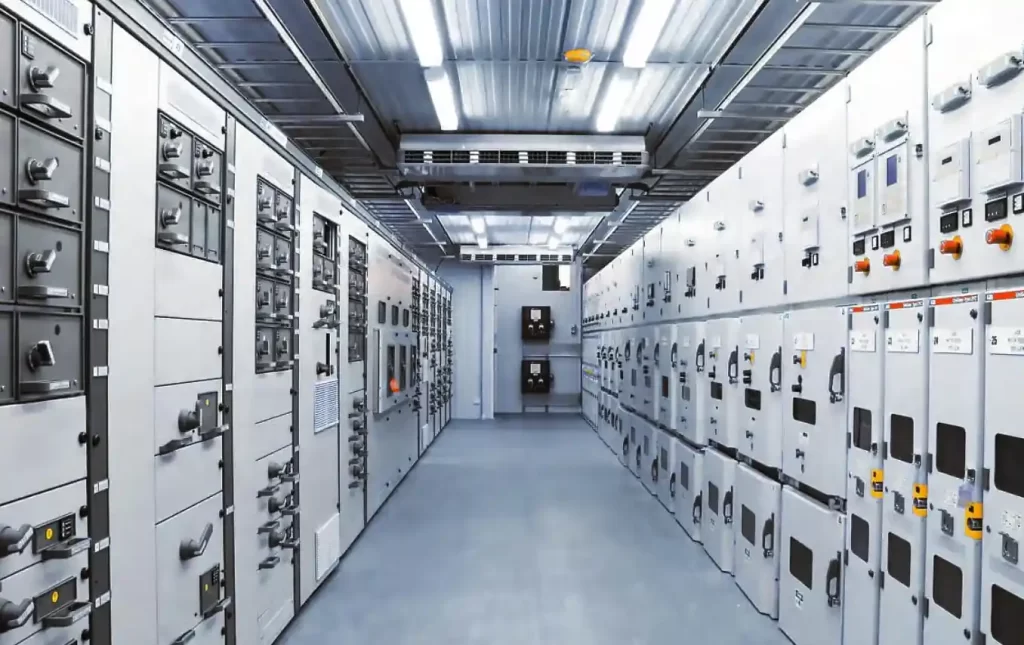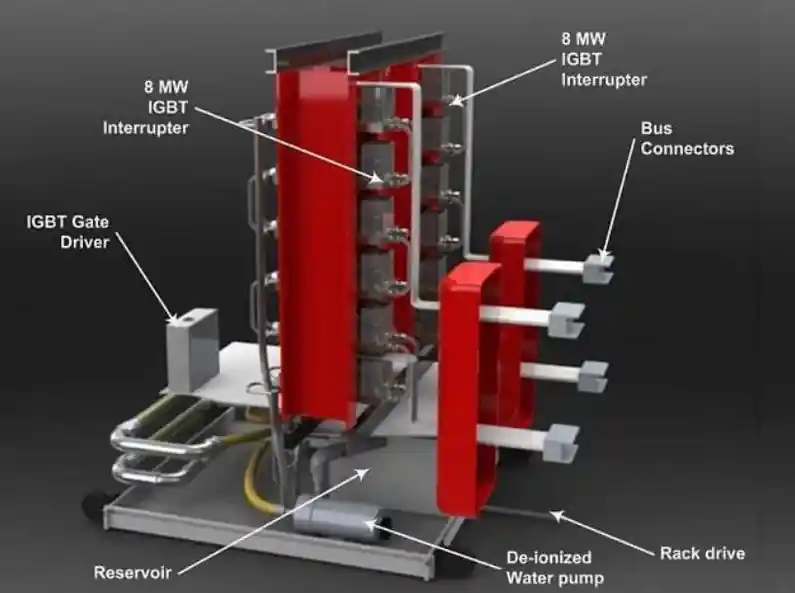Introduction
Low Voltage (LV) switchgear is an essential component in electrical power systems, particularly in commercial, residential, and industrial applications. But one of the most frequently asked questions is: What is the voltage of LV switchgear? Understanding the answer is crucial for ensuring compatibility, safety, and optimal performance in any power distribution system.
This article explores the standard voltage range of LV switchgear, its real-world applications, how it compares to medium and high voltage solutions, and how to select the right system based on project requirements. Whether you’re an electrical engineer, facility manager, or technical buyer, this guide will provide practical and reliable insights into the world of LV switchgear.
What Is LV Switchgear?
Low voltage switchgear refers to electrical equipment designed to protect, control, and isolate electrical circuits that operate at voltages up to 1000 volts AC (alternating current) or 1500 volts DC (direct current). According to the International Electrotechnical Commission (IEC 61439), the low voltage category covers systems that operate at or below these voltage limits.
This type of switchgear is used to:
- Safely distribute electrical power
- Interrupt fault currents
- Isolate circuits during maintenance
- Protect personnel and equipment

Core Components of LV Switchgear
- Circuit breakers (MCB, MCCB, ACB)
- Busbars
- Contactors
- Fuses
- Disconnect switches
- Relays and protection devices
Each of these components plays a specific role in ensuring the system remains safe, efficient, and responsive to abnormal conditions.
Typical Voltage Range of LV Switchgear
The term “low voltage” might vary slightly depending on international standards, but in most contexts, LV switchgear operates within the following voltage ranges:
- AC Systems: 50V to 1000V
- DC Systems: 120V to 1500V
In practical applications, the most common voltage levels for LV switchgear include:
- 230/400V for residential and small commercial use
- 415V in three-phase industrial setups
- 480V systems commonly used in North American industries
- 690V in specialized industrial environments like mining or large machinery
These voltage levels correspond to standard supply systems in various countries and regions.

Applications and Use Cases
LV switchgear is ubiquitous in power distribution due to its adaptability and safety features. It is used across diverse sectors, often serving as the first line of protection in a power distribution network.
Common Use Cases
- Commercial Buildings: For lighting, HVAC, and elevator systems
- Manufacturing Facilities: To protect heavy-duty motors and machinery
- Data Centers: For safe and reliable UPS and power distribution
- Renewable Energy Systems: LV switchgear manages output from solar inverters or battery storage systems
- Infrastructure Projects: Airports, hospitals, and shopping malls depend on robust LV panels

Market Trends and Industry Standards
According to a recent report by MarketsandMarkets, the global LV switchgear market is expected to surpass USD 70 billion by 2028, driven by rapid urbanization, industrial automation, and demand for renewable energy integration.
Major players like ABB, Schneider Electric, Siemens, and Legrand are innovating in areas such as:
- Modular switchgear design
- Smart monitoring and IoT-enabled panels
- Enhanced arc flash protection
- Sustainable and recyclable switchgear materials
International standards like IEC 61439-1 and IEEE C37.20.1 provide comprehensive guidelines for testing, design, and performance of LV switchgear.
Technical Features and Specifications
Let’s explore the key technical specifications that define LV switchgear performance:
| Specification | Typical Value |
|---|---|
| Rated Voltage | Up to 1000V AC / 1500V DC |
| Frequency | 50/60 Hz |
| Rated Current | 100A to 6300A |
| Short Circuit Withstand | 25kA to 100kA |
| Protection Class | IP42 to IP65 (depending on enclosure) |
| Standard Compliance | IEC 61439, ANSI C37, UL 891 |
| Mounting Options | Floor-standing or wall-mounted |

Differences from Medium and High Voltage Switchgear
It’s important not to confuse LV switchgear with its medium or high voltage counterparts. Here are some key distinctions:
| Category | Voltage Range | Typical Use |
|---|---|---|
| Low Voltage (LV) | ≤ 1000V AC / 1500V DC | Buildings, industries, data centers |
| Medium Voltage (MV) | 1kV – 36kV | Substations, wind farms, water treatment |
| High Voltage (HV) | >36kV | Transmission lines, utility grids |
LV switchgear is safer, easier to install, and more affordable, whereas MV/HV systems require more insulation, remote operation, and specialized maintenance.
How to Choose the Right LV Switchgear
Selecting the right low voltage switchgear depends on multiple factors beyond just the rated voltage. Here’s a step-by-step approach:
- Assess Load Requirements
- Calculate the peak current and voltage needed by your system.
- Environmental Conditions
- Choose an IP-rated enclosure if used outdoors or in dusty environments.
- Short Circuit Capacity
- Ensure the short-circuit withstand rating exceeds the fault level at the installation point.
- Future Scalability
- Opt for modular switchgear designs that allow expansion.
- Standard Compliance
- Verify certifications like IEC, UL, or ANSI for safety assurance.
- Maintenance Needs
- Consider accessibility, spare parts availability, and maintenance protocols.

Trusted Industry References
To ensure you’re selecting reliable equipment, always refer to authoritative publications and manufacturers. These sources provide valuable data, test results, and case studies:
- IEEE Standards – Electrical safety and performance metrics
- IEC 61439 – Global standard for LV switchgear assemblies
- ABB LV Switchgear Solutions – Product catalogs and white papers
- Schneider Electric Blog – Industry insights and innovations
- Wikipedia: Switchgear – Technical overview
Frequently Asked Questions (FAQ)
The standard rated voltage for LV switchgear is typically 230/400V for single and three-phase systems, though it can go up to 1000V AC or 1500V DC depending on the application and regional standards.
Yes. LV switchgear is commonly used in solar inverter outputs, battery energy storage systems (BESS), and EV charging stations, especially in DC configurations up to 1500V.
If your system operates below 1000V AC, LV switchgear is suitable. For systems above that—such as substations, large industrial plants, or renewable grid feeders—MV or HV switchgear is required.
Final Thoughts
Understanding the voltage range of LV switchgear is fundamental to ensuring electrical safety and performance. With voltages typically up to 1000V AC or 1500V DC, this category of switchgear is perfectly suited for modern buildings, factories, and energy solutions.
Whether you’re designing a new power system or upgrading an old one, selecting the right LV switchgear based on current ratings, fault capacity, environment, and standard compliance can greatly reduce downtime and enhance safety.
Always consult qualified professionals and refer to trusted manufacturers to make informed decisions that stand the test of time.